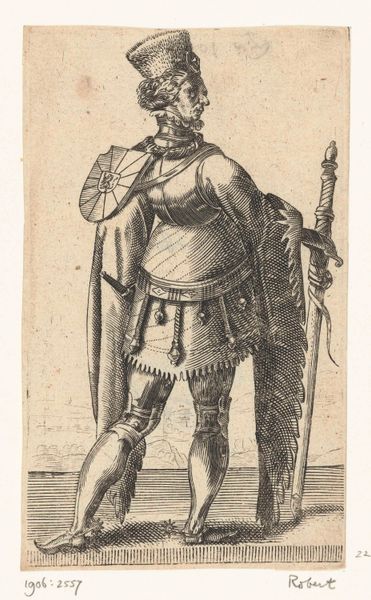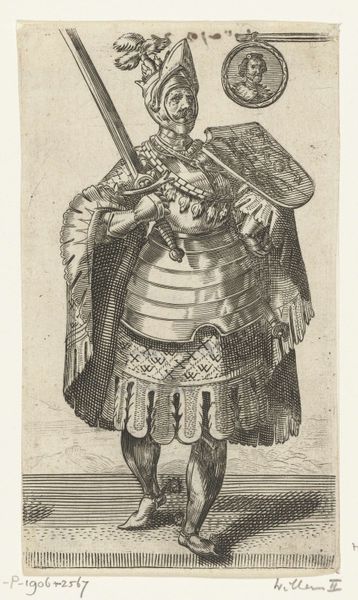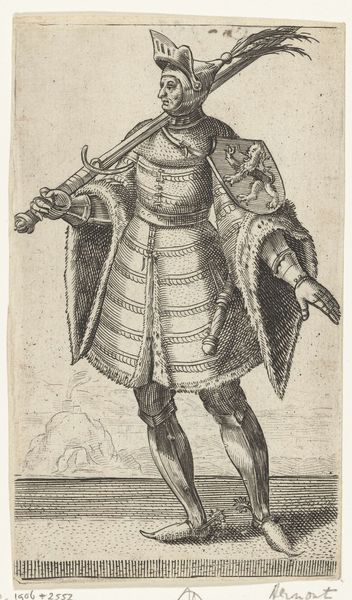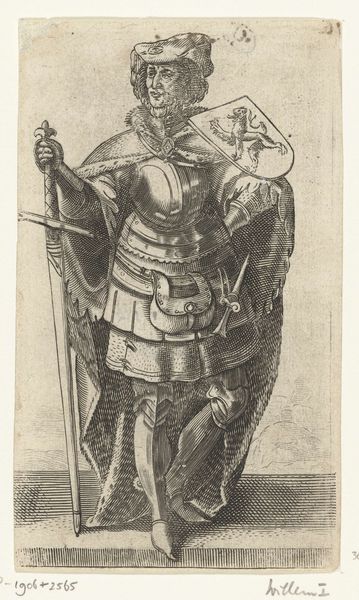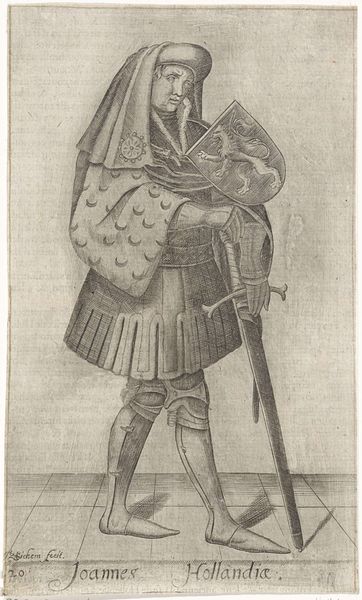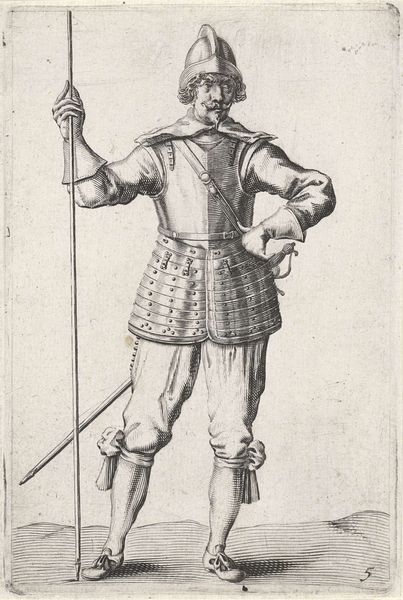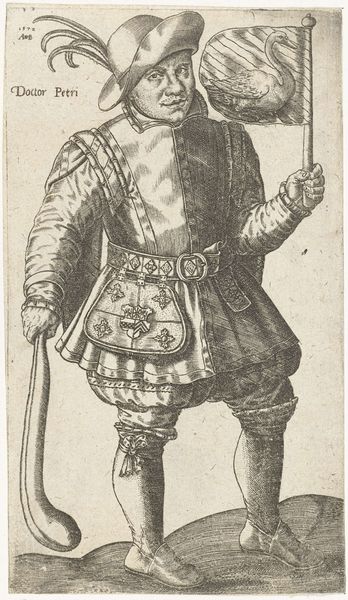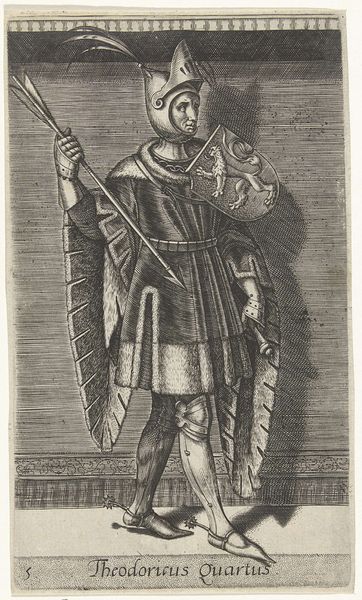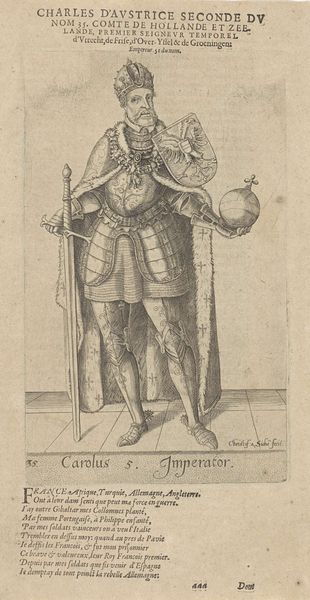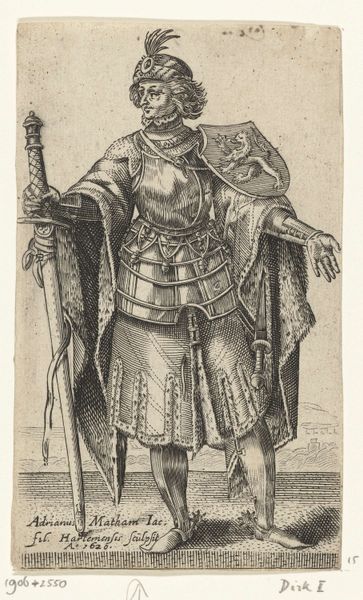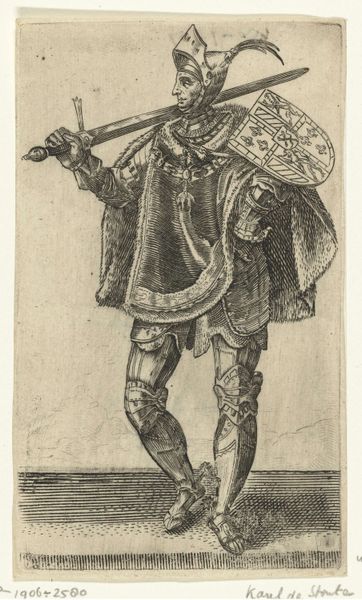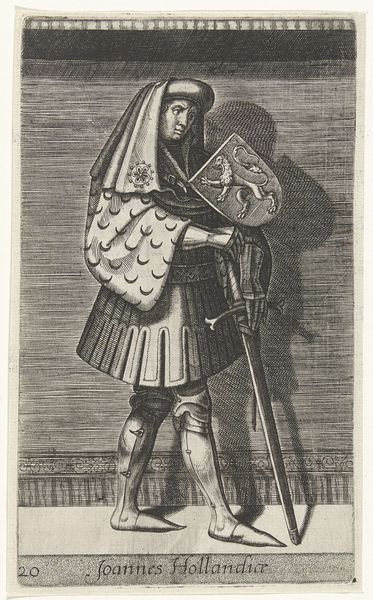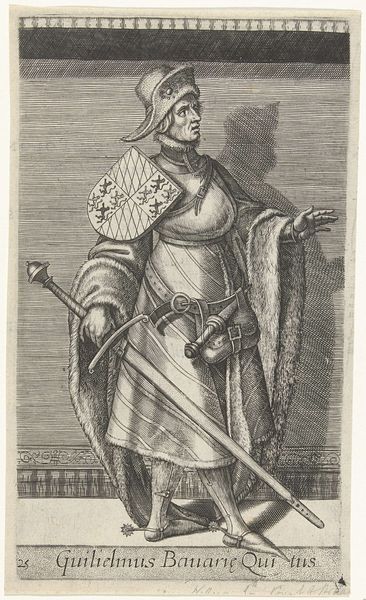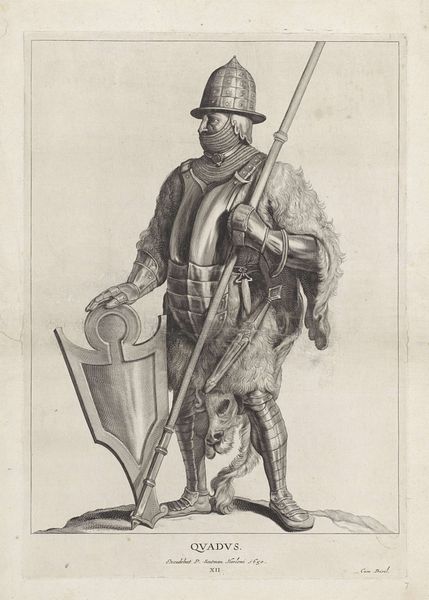
print, engraving
#
portrait
#
baroque
# print
#
old engraving style
#
figuration
#
line
#
history-painting
#
academic-art
#
engraving
Dimensions: height 130 mm, width 80 mm
Copyright: Rijks Museum: Open Domain
Curator: Adriaen Matham's engraving, "Portret van Dirk VII, graaf van Holland," created in 1620, is an intriguing piece. Editor: Yes, I find myself immediately struck by the figure's seemingly awkward posture. It gives an impression of forced regality, doesn't it? As though the artist struggles with portraying power convincingly. Curator: That's a perceptive observation. Structurally, the composition emphasizes the intricate detail of his armor and heraldry. Note the meticulous lines that define the textures, giving the piece a stark contrast between light and shadow. Semiotically, we could consider the details to serve to underscore ideas around social standing and the privileges of lineage. Editor: But what does it *mean* to portray Dirk VII in this way during the 17th century, over four centuries after he died? To me, this feels like a construction of a specific historical narrative. This piece almost certainly served a particular sociopolitical function for Matham and his intended audience at that time. How do we address the role of this image in Dutch cultural identity formation? Curator: Ah, now we venture into interpretation informed by its time, considering audience expectations for the art's engagement. Editor: Precisely. Did it act as propaganda? A nostalgic representation during a period of upheaval? To understand how power was visually articulated, especially within the elite class, one can trace evolving notions about Dutch identity through carefully selected artifacts. This portrait is certainly one data point that can reveal insight into that history. Curator: That brings up a potent discourse surrounding the construction of identity and power in early modern portraiture! The sharp lines, controlled engraving technique...everything directs attention to Matham's command of the medium. The image then becomes less about Dirk VII and more about representation *per se.* Editor: But such meticulousness could also symbolize control—control over history, representation, and, of course, social standing. A carefully cultivated illusion to convey certain ideals to audiences then as well as us now. Curator: A point well-taken! By situating it contextually, it enriches the aesthetic experience. Thank you for highlighting these considerations. Editor: My pleasure! Together, maybe we help create awareness that sparks even broader, more enriched dialogue.
Comments
No comments
Be the first to comment and join the conversation on the ultimate creative platform.
